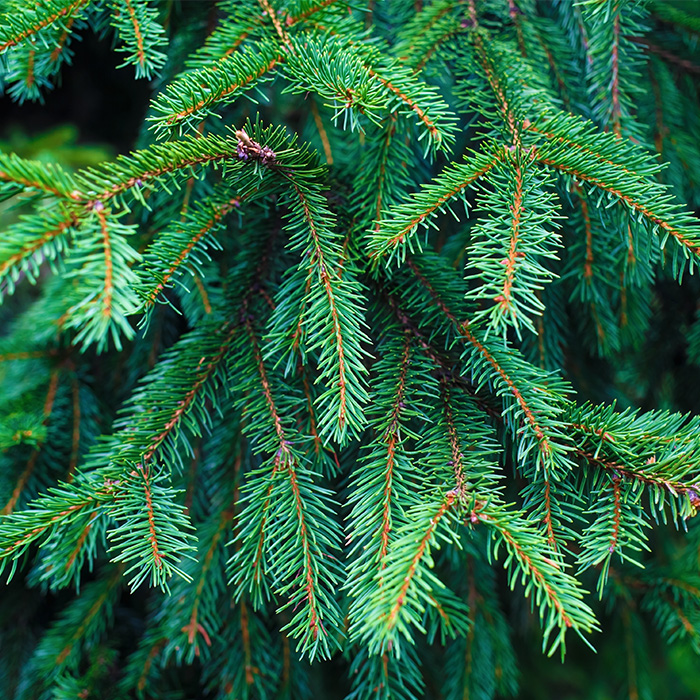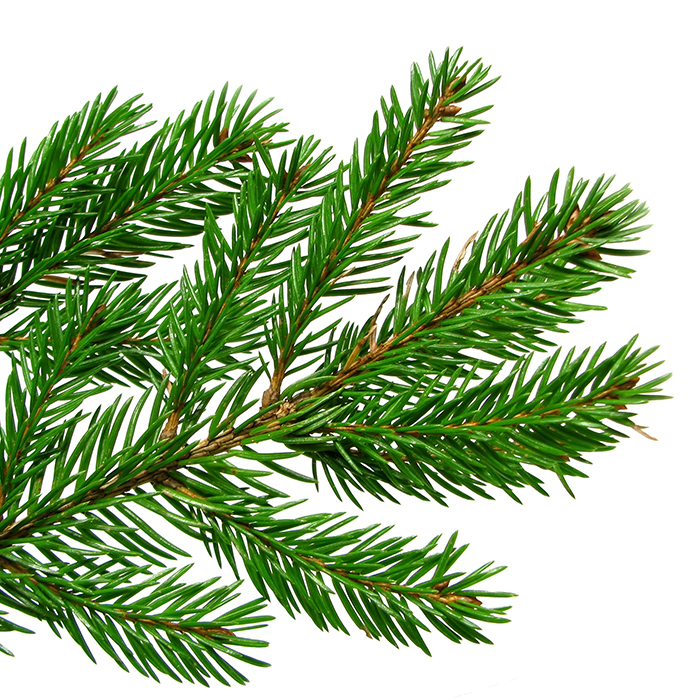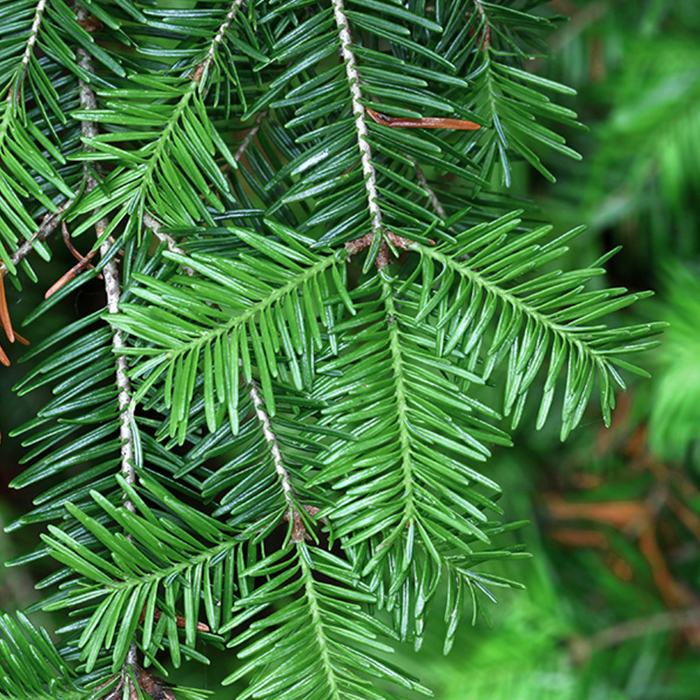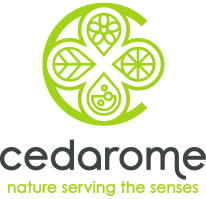Description
Balsam Fir concrete and absolute are sourced from the northeastern part of Canada. The tree’s range extends from Newfoundland and Labrador westward through the more northernly portions of Quebec and Ontario. The concrete and the absolute are extracted by solvent from the needles and twigs of the Abies Balsamea tree.
Concrete appears as a green, solid paste. The absolute is obtained through ethanol extraction of the concrete, and is a mild green paste with notes of balsamic berry, sweet, green pine, mossy and floral. It also has an excellent tenacity and is 100% soluble between 0 and 4 degrees Celsius, and it can be used in perfumes and cosmetics.
Olfactive Profile
Coniferous scent, balsamic, sweet and fruity.
balsamic
fruity
Flavor Profile
Not Food grade
- Details
- Technical Sheet
- Downloads
- Sources
Details
Botany:
Abies balsamea, is a small to medium-sized evergreen coniferous member of the Pinaceae family. It can reach heights
between 15 to 23 meters topped with a dense crown. The twigs are smooth, the needles are arranged spirally around the
sprout. Balsamea Fir is monoecious, both male and female cones occur on the top branches of the tree. It is popular as a
Christmas tree for its intense and rich scent.
Ethnobotany:
This tree is known as the Real Tree of Peace which was referenced in many historical stories from the early colonies.
Indigenous tribes made extensive use of the Balsam tree to treat a wide variety of ailments including heart disease, colds,
kidney pain, rheumatic joints, and cough.
Uses:
Applications include fine fragrance, cosmetics, flavour/food, and aromatherapy.
Technical Sheet
Botanical name: Abies balsamea
Botanical family: Pinaceae
Accepted synonyms: Canada Balsam, Annedda
Common names: Fir needle oil, Balsam Fir, Fir tree
Origin: Northeastern Canada, Quebec
Source: Canada
Cultivation method: Cultivated and Wild harvested
Harvest period: April to October
Plant part used: Needles and twigs
Method of extraction: Steam distillation
Main components: α-Pinene, δ-3-Carene, β-Pinene, Myrcene, I-Bornyl acetate
CAS: 8024-15-5 / 85085-34-3
INCI: Abies balsamea needle oil
FEMA: 2114
EC: 285-364-0
Appearance: Green solid to syrupy mass with a characteristic odor.
Certifications and Declarations:



- Certificate of Analysis
- Safety Data Sheet
- Natural Statement
- Origin Statement
- GMO Statement
- Prop 65
Downloads
Sources
BRIT – Native American Ethnobotany Database. (n.d.). Naeb.brit.org. http://naeb.brit.org
Integrated Taxonomic Information System. (2019). Itis.gov. http://www.itis.gov
Kricher, J. C., Morrison, G., National Audubon Society, National Wildlife Federation, & Tory, R. (1998). A
Field guide to Eastern forests : North America. Houghton Mifflin.
Marie-Victorin, Frère F.É.C, Luc Brouillet, Rouleau, E., Goulet, I., & Hay, S. (2002). Flore laurentienne. G.
Morin.
Moerman, D. E. (1998). Native American ethnobotany. Timber Press.
Petrides, G. A., Wehr, J., National Audubon Society, National Wildlife Federation, & Tory, R. (1998). A field
guide to eastern trees : eastern United States and Canada, including the Midwest. Houghton Mifflin.
Welcome to the PLANTS Database | USDA PLANTS. (2016). Usda.gov. http://plants.usda.gov






